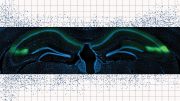
The Black Death in the 14th century may have triggered a significant shift in the human oral microbiome, now associated with modern chronic diseases. Research analyzing ancient dental calculus revealed changes in microbial communities post-pandemic, influenced by dietary shifts. This study offers a vital understanding of the evolution of human microbiomes and their impact on current health issues.
New research suggests that the Second Plague Pandemic might have influenced the development of oral microbiomes that contribute to modern-day chronic disease.
The mid-14th century witnessed a devastating event known as the Black Death or the Second Plague Pandemic, which resulted in the death of 30-60% of Europe’s population, significantly altering the trajectory of European history. Recent research conducted by teams from Penn State and the University of Adelaide indicate that this pandemic may have inadvertently influenced the human oral microbiome. The changes in diet and hygiene practices following the plague could have led to a transformation in the oral microbiome, toward one that contributes to chronic diseases in modern-day humans.
“Modern microbiomes are linked to a wide range of chronic diseases, including obesity, cardiovascular disease, and poor mental health,” said Laura Weyrich, associate professor of anthropology, Penn State. “Uncovering the origins of these microbial communities may help in understanding and managing these diseases.”
Challenges in Microbiome Research
According to Weyrich, dietary changes are believed to have influenced oral microbiome evolution through time; however, few studies have directly examined the history of human oral microbiomes in a single population. Weyrich noted that some studies have used the microbiomes of living Indigenous people who practice traditional subsistence lifestyles as a proxy for the microbiomes of pre-industrialized peoples. Yet, this strategy is faulty, she said, because modern-day non-industrialized populations may not have microbes that accurately reflect those that existed in the ancestors of industrialized peoples.
Additionally, she said, “This research places unnecessary responsibilities and obligations on Indigenous communities to participate in microbiome research, where the benefits of these studies may not directly serve Indigenous peoples.”
A more accurate and ethically responsible method is to directly examine the oral microbiomes preserved within calcified dental plaque, known as calculus, from the ancestors of Industrialized people with the permission and collaboration of decedent populations and stakeholders. In the largest study to date of ancient dental calculus, Weyrich and her colleagues collected material from the teeth of 235 individuals who were buried across 27 archaeological sites in England and Scotland from about 2,200 B.C. to A.D. 1853.
Laura Weyrich, associate professor of anthropology, Penn State, discusses her research suggesting that the Second Plague Pandemic of the mid-14th century may be associated with a shift in the composition of the human oral microbiome toward one that contributes to chronic diseases in modern-day humans. Credit: Penn State
The findings were recently published in Nature Microbiology.
The researchers processed the samples in an ultra-sterile, ancient DNA laboratory to minimize contamination. They identified 954 microbial species and determined that they fell within two distinct communities of bacteria — one dominated by the genus Streptococcus — which is common in the oral microbiomes of modern Industrialized peoples — and the other by the genus Methanobrevibacter — which is now largely considered extinct in healthy Industrialized people.
Exploring the origins of these two communities, the team found that almost 11% of the total variation in microbiome species composition could be explained by temporal changes, including the arrival of the Second Plague Pandemic. But how could the Second Plague Pandemic contribute to changes in the oral microbiome?
Impact of the Second Plague Pandemic on Oral Microbiome
“We know that survivors of the Second Plague Pandemic earned higher incomes and could afford higher-calorie foods,” said Weyrich. “It’s possible that the pandemic triggered changes in people’s diets that, in turn, influenced the composition of their oral microbiomes.”
The team used a novel approach to investigate whether a change in diet could have influenced the emergence of the Streptococcus group and the extinction of the Methanobrevibacter group. They assembled a list of functional differences among the bacteria in the two groups that could be linked to diet; for example, functions linked to high or low-dietary fiber digestion, carbohydrate metabolism, and lactose — a sugar in milk — metabolism.
The researchers found that the bacteria in the Streptococcus-dominated group had more functional traits that are significantly linked with low-fiber, high-carbohydrate diets, as well as dairy consumption — all of which characterize modern-day diets. By contrast, the Methanobrevibacter-dominated group were missing traits associated with dairy and sugar consumption, which characterized the diets of some ancient humans.
Link Between Microbiomes and Diseases
The team further determined that the Streptococcus group was associated with the presence of periodontal disease, which is characterized by infections and inflammation of the gums and bones around the teeth. When this disease progresses, bacteria can enter the bloodstream through gum tissue and potentially cause respiratory disease, rheumatoid arthritis, coronary artery disease, and blood sugar issues in diabetes. The Methanobrevibacter group, on the other hand, was associated with the presence of skeletal pathologies.
“Our research suggests that modern-day oral microbiomes may reflect past changes in diet, resulting from the Second Plague Pandemic,” said Weyrich. “Importantly, this work helps to inform our understanding of modern-day chronic, noncommunicable diseases.”
Reference: “Ancient dental calculus reveals oral microbiome shifts associated with lifestyle and disease in Great Britain” by Abigail S. Gancz, Andrew G. Farrer, Michelle P. Nixon, Sterling Wright, Luis Arriola, Christina Adler, Emily R. Davenport, Neville Gully, Alan Cooper, Kate Britton, Keith Dobney, Justin D. Silverman and Laura S. Weyrich, 29 November 2023, Nature Microbiology.
DOI: 10.1038/s41564-023-01527-3
Other Penn State authors of the paper include Abigail Gancz, graduate student; Michelle Nixon, assistant research professor of information sciences and technology; Sterling Wright, graduate student; Emily R. Davenport, assistant professor of biology; and Justin Silverman, assistant professor of information sciences and technology. Other co-authors include Andrew Farrer, graduate student, University of Adelaide; Luis Arriola, graduate student, University of Adelaide; C. Adler, senior lecturer, School of Dentistry, University of Sydney; Neville Gully, assistant dean learning and teaching, Adelaide Dental School, University of Adelaide; Alan Cooper; Kate Britton, professor of archaeology, University of Aberdeen; and Keith Dobney, head, School of Historical and Philosophical Inquiry, University of Sydney.
The Australian Research Council, National Science Foundation, and Penn State supported this research.









Be the first to comment on "The Black Death’s Surprising Impact on Today’s Oral Health"